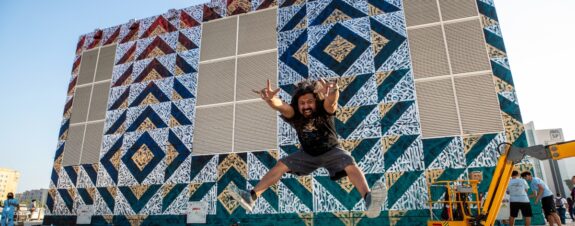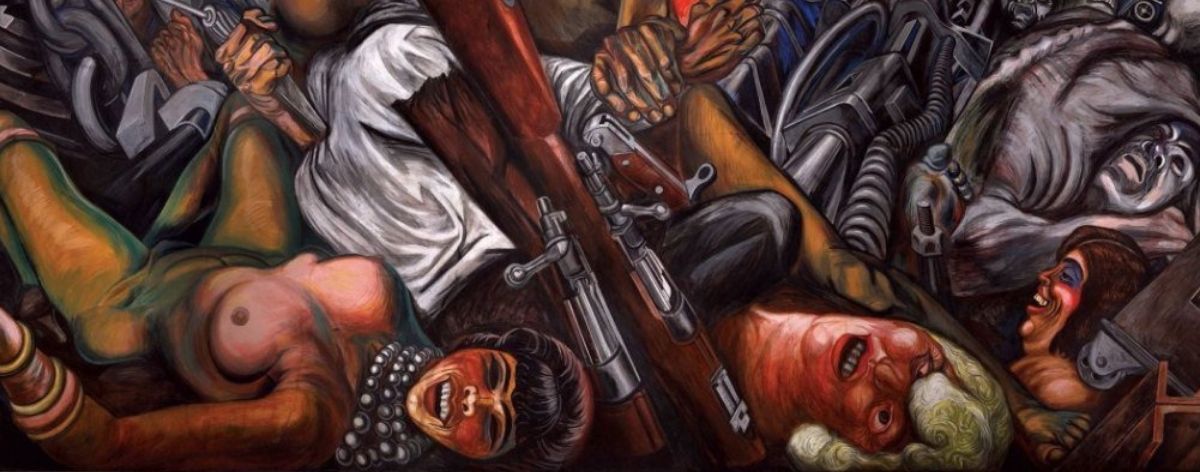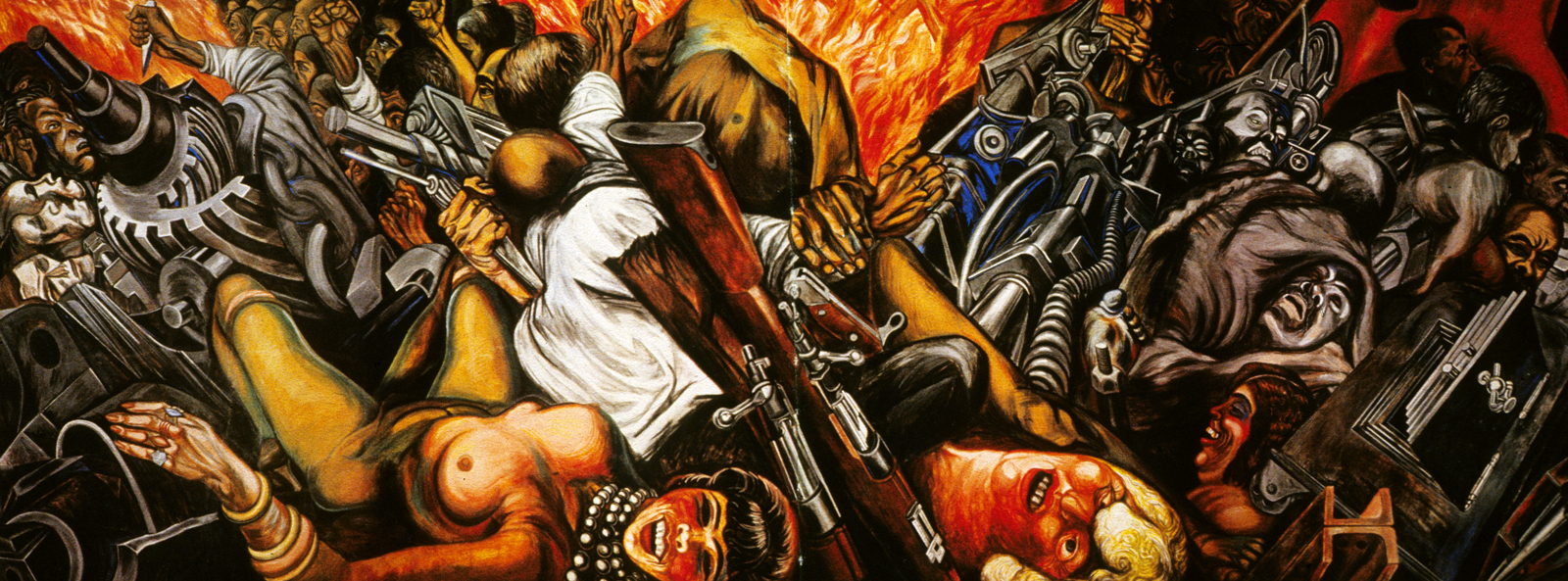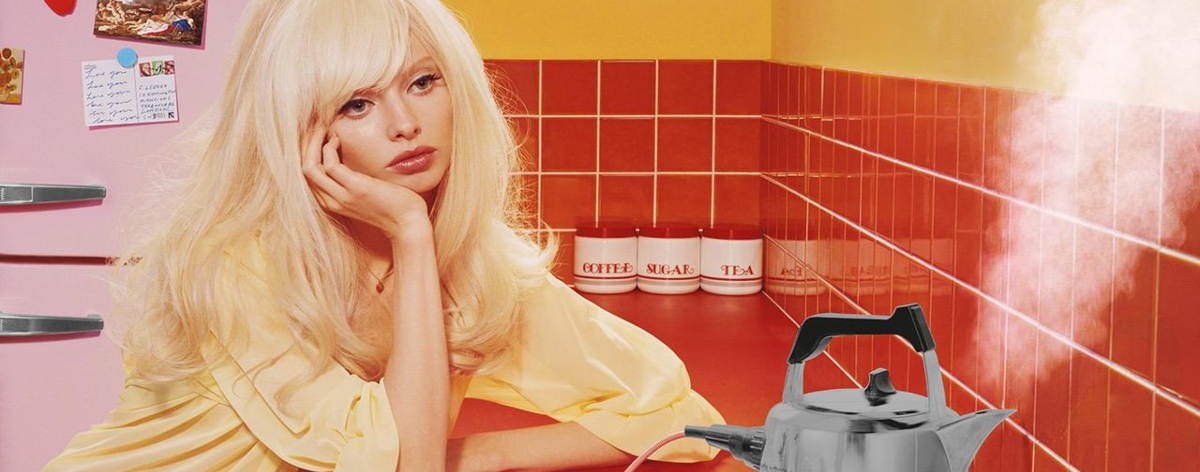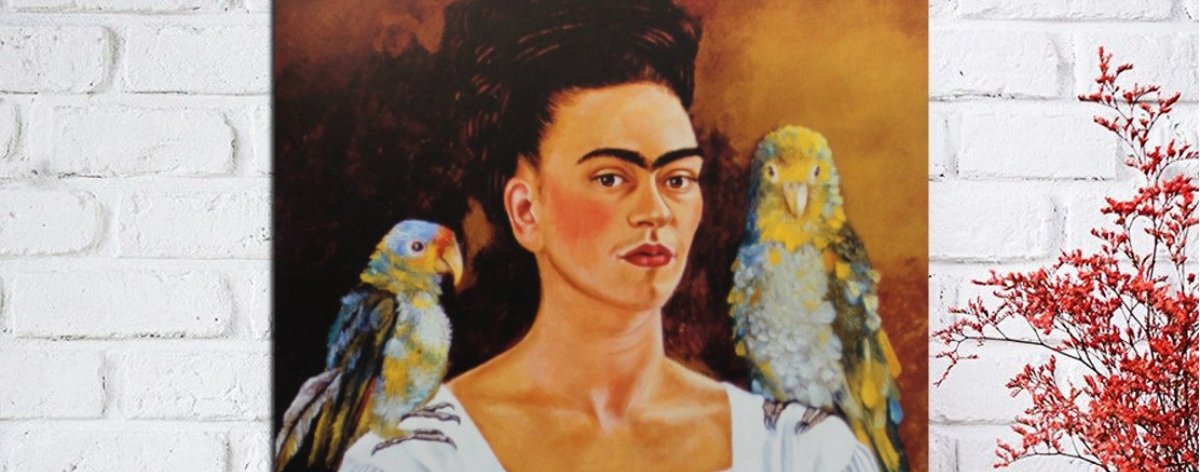Orozco ‘s objective was to illustrate a universal truth instead of addressing microcosmic symptoms of the general disease…
First, this is a truly and sensitive essay abour José Clemente Orozco ´s legacy. Whenever I come back to Mexico City, I go visit my friends on the third floor of Palacio Nacional de Bellas Artes. I sit with each one, making eye contact with all of them while listening to what these very tall friends have to say, even if it is more of a monologue. Although I go see them whenever I get the chance, they never fail to welcome me with fresh areas of astonishment.
I visit the murals that reside in the corridors of Bellas Artes not only because a day spent with these masters compensates for the longest periods of solitude, but because their voices say much more than anyone worth calling a friend.
On this particular occasion I went to see the murals with a fellow artist. We always go to museums and galleries together and it is not unusual to have heated conversations about the piece in front of us, agreeing to disagree if we are lucky. While commenting on one of the pieces by Siqueiros, we noticed an old man with a loud voice and bold adjectives was complaining about the title of the mural by José Clemente Orozco. We stared at the man and his theatricality but quickly carried on with our snobby discourse about stylistic choices and material handling in Siqueiros’ work. The man and his wife approached us and quizzed us about Orozco’s mural, Catharsis. My companion and I exchanged looks that echoed our skepticism. But after listening to the symphonies of rants by this man, we learned he is Orozco’s oldest son.
Catharsis, an Orozco’s masterpiece
Clemente Orozco, the artist’s oldest son, controls a great deal of his father’s work and its rights. Yet, he kept complaining about the mistaken title of Catharsis (1933-35).
I will abstain from describing this masterpiece because no words could do justice to its dynamism. But for the mere purpose of this note: Catharsis depicts universal chaos to comment on society’s decay and the mechanical nature of violence in the name of progress-to say the very least. Clemente Orozco claims that the title of this mural should be “Universal Prostitution” given that selling oneself is what triggers the deterioration of society.
In Catharsis, three prostitutes are laughing grotesquely at the bottom of the mural. They all look like puppets and mock the viewer with their seductive bodies and overdone faces. Clemente insisted that prostitution is the sharpest metaphor for a society that is fed off of corruption in all existing fields. José Clemente Orozco captures the temptation of exchanging dignity for power and wealth and that might as well be the parasite of society in the extensity of its timeline.
Orozco´s objective was to illustrate a universal truth
José Clemente Orozco was more ambitious than his contemporaries given that his objective was to illustrate a universal truth instead of addressing microcosmic symptoms of the general disease.
His son continued his rant by saying the characters in Siqueiros’ works seemed to be made out of cardboard. He then turned to look at the mural by Siqueiros, Nueva Democracia, and said the body of the woman looked stiff, whereas in Orozco’s Catharsis the body of the largest prostitute was credible enough to make the viewer want to touch it.
After criticizing Siqueiros’ lack of technique and referring to his work as craft rather than art, he began trashing Rivera. He said he grew up seeing these artists and that is why he can say the work by Rivera is idealist and decorative and that is why he is the most popular.
Clemente Orozco has an evident bias, but when he refers to his father as a genius there is truth. I disagree with Clemente, Siqueiros and Rivera were undoubtedly masters; but Clemente is right too, they lack the creative genius of his father.
Clemente says that to be a genius one must meet three conditions…
1. One must have the temperament to master a technique and then create a voice. Absolute expression is problematic and frustrating, only the people who have the character to overcome that frustration will be able to solve the problem of expression.
2. One must develop intriguing and relevant themes that are worthy of a masterpiece. The content is the backbone for any masterpiece and it will give life to form.
3. And most importantly, he says, one must have imagination.
But these three conditions simplify José Clemente Orozco’s genius and fail to justify it entirely. Of the three most important Mexican muralists, Orozco is the least popular and that is expected. No one likes to see oneself reflected in a mirror of explicit sincerity. Orozco painted people who were so dehumanized that they were barely recognizable as individuals.
One of the few who had ideas of his own
His depictions are mostly grotesque, but it is an intentional ugliness meant to ridicule what lies beneath any system. But what nurtured this aesthetic was his critical standpoint independent from any doctrine or popular belief; Orozco was one of the few who had ideas of his own.
In his autobiography he says, “When someone says Yes, one must say No, because if we would all agree civilization itself would be in danger” to demonstrate what he considered to be the most hygienic, intellectually speaking. Every piece by this genius reflects his meditations about what it to be a man and demonstrates an anxiety that questioned this not only artistically, but ethically and metaphysically as well.
Clemente’s wife was pressuring him to leave because they had to go somewhere. He left, gave us his card and said we could only contact him if we included a proper definition of Muralism. We did not write.
Written by Nicole Chaputo

